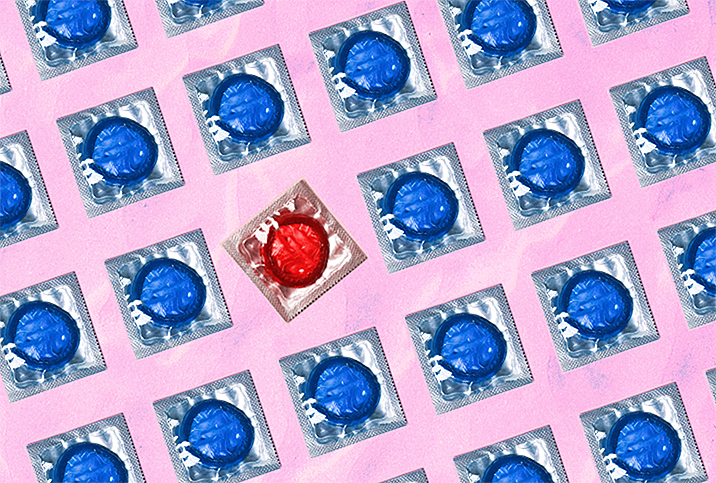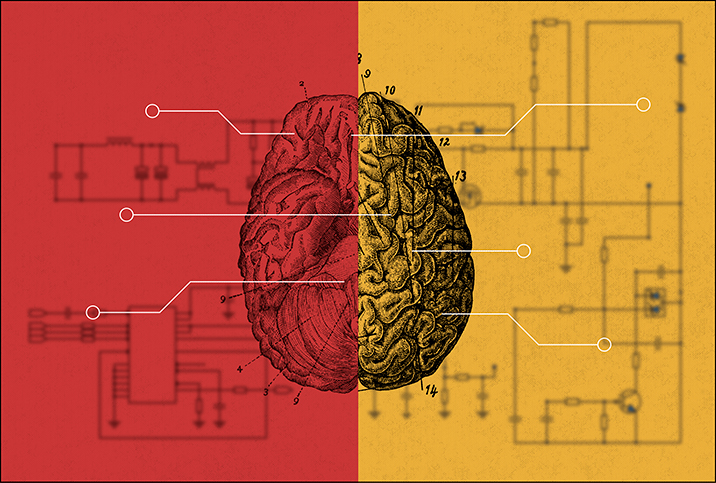When Compulsions Are Internal, OCD Becomes Pure O

A clinical review published in "The BMJ" in 2014 listed obsessive-compulsive disorder (OCD) as the fourth most common mental disorder, affecting approximately 1.6 percent of the general population. In pop culture, OCD sufferers are depicted as germaphobes or extreme organizers, afraid of the world around them.
However, this isn't the full picture. Some cases of OCD are more subtle, as is the case with so-called Pure O OCD, a disorder I struggle with.
An emphasis on the obsessive
Pure obsessional OCD—or Pure O—isn't a technical or scientific term. Rather, it's used by laypeople to identify a specific subset of obsessive-compulsive disorder.
"When people say, Pure O OCD, they are referring to the presence of intrusive, unwanted and obsessive thoughts without the presence of overt compulsions," said Monnica Williams, Ph.D., the Canada research chair for mental health disparities at the University of Ottawa.
In other words, people with Pure O OCD have the "obsessive" part of obsessive-compulsive disorder, but no observable compulsions. This can be confusing to people who aren't experienced with OCD. Although I've had symptoms since I was 6 years old, I didn't have any observable compulsions. For most of my life, I never considered my problems to be related to obsessive-compulsive disorder because I didn't act like the people I saw with OCD on TV: I didn't have to arrange things in a specific order or wash my hands countless times and disinfect every countertop.
"Pure O is somewhat of a misnomer, as clients with this condition do engage in compulsive behavior, although it's not as obvious to the individual or an untrained therapist," Williams explained. "Clients with Pure O are engaging in mental/unseen rituals as a response to these intrusive thoughts. Reassurance-seeking behaviors, rumination, mental counting or reviewing, and mental 'un-doing' are extremely common, and are all considered compulsions."
Although these behaviors aren't necessarily observable to others, that doesn't mean they aren't compulsions. Once I understood these behaviors were compulsions it became easier to accept my diagnosis and to get help and treatment.
Pure O symptoms
Every person will experience slightly different symptoms, but many Pure O sufferers may find that there's a theme they share.
"Taboo thoughts are a common type of obsession seen in people who might consider themselves to have Pure O OCD," Williams said.
Some common obsessions include thoughts about:
- Acting violently, and harming or killing your family members, friends, spouse, yourself or others. This is sometimes referred to in support groups as "Harm OCD."
- Being the opposite sexual orientation of your actual orientation. For example, someone who is straight might have excessive thoughts about being gay, sometimes called "HOCD/homosexual OCD." Vice versa, someone who is gay might have excessive thoughts about being straight.
- Bodily functions, such as breathing, digestion, blinking, etc.
- Existential questions, such as who you really are and what reality really is. This is sometimes referred to as "Existential OCD."
- Your morality, especially as it pertains to religion. For example, you may obsessively fear you are sinning and not living according to your faith, religion or society's moral ethics.
I have had every obsession listed above at one point in my life. The obsessions attack core parts of your identity and that makes it difficult not to fixate on them. I would spend hours ruminating, seeking reassurance and coming up with ways to check and analyze if the thoughts were true.
"Those experiencing taboo or unacceptable thoughts generally spend more time ruminating on whether these thoughts are true as opposed to engaging in physical compulsions to decrease their anxiety," Williams noted.
Treatment
If you think you may have Pure O, know that you're not alone. According to Williams, "OCD with taboo or unacceptable thoughts is a sizable percentage of sufferers."
Although it was previously thought that obsessive-compulsive disorder was next to impossible to manage, we now know that not to be the case. A specific type of cognitive behavioral therapy (CBT) has shown to be very effective in its treatment, including Pure O.
"A structured form of cognitive behavioral therapy called exposure and response prevention (ERP) is available for people with taboo or unacceptable thoughts," Williams explained. "It's the same treatment offered to those experiencing other subtypes and works just as well. ERP is the gold standard for treating OCD."
Exposure-response therapy consists of gradual, prolonged and repeated exposure to the situations that cause your anxiety until the anxiety fades away.
I would spend hours ruminating, seeking reassurance and coming up with ways to check and analyze if the thoughts were true.
"The response prevention aspect involves learning how to resist or prevent the compulsions or rituals," Williams added. "Stopping compulsions allows clients to realize that these behaviors do not protect them from their obsessive concerns."
According to the OCD Center of Los Angeles, mindfulness-based CBT can be an effective treatment for Pure O. Personally, mindfulness has played a key part in my recovery, in learning to non-judgmentally accept the uncomfortable and unwanted thoughts and psychological experiences.
Sometimes people with Pure O are more reluctant to reach out for help because of the taboo nature of the obsessions. I was terrified at the thought of talking to my doctor about the thoughts I was having. But once I reached out for help and got a diagnosis I experienced relief. Knowing you're not alone and that there are treatment options can give you the spark of hope you need to keep going.
If you're experiencing symptoms and think you might have Pure O, don't hesitate to reach out to a doctor or mental health professional for support. Nobody deserves to suffer in silence. As cliché as it sounds, I know firsthand it can get better.


















